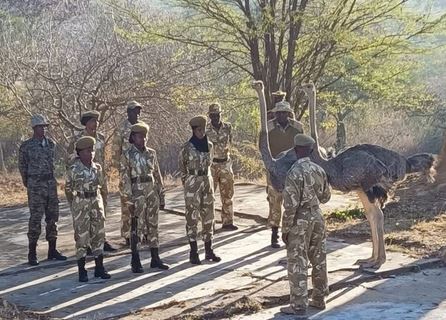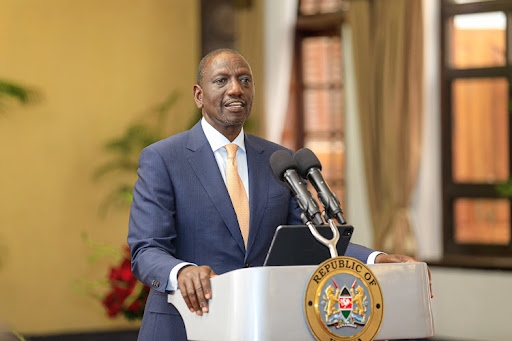

In the heartlands of the country, where the boundary between untamed wilderness and human habitation often blurs, the Kenya Wildlife Service is taking determined steps to mend the fragile relationship between communities and wildlife.
For years, people living near protected areas have faced the daunting challenge of coexisting with elephants, lions and other wild animals.
Crops have been trampled, livestock attacked and in tragic instances, lives lost. But a new chapter is unfolding, one of collaboration, investment and hope.
To curb the escalating human-wildlife conflict, KWS has constructed 122 kilometres of new electric fencing, rehabilitated 71 kilometres of worn-out barriers and maintained an impressive 2,064 kilometres across the country.
These fences act not only as physical boundaries but as lifelines, preserving the delicate balance between safeguarding human settlements and protecting Kenya’s iconic wildlife.
In January 2025, Tourism and Wildlife Cabinet Secretary Rebecca Miano affirmed that the government is committed to fencing off game parks and reserves to avert cases of human-wildlife conflict.
“We have received three tragic reports of people being killed by elephants. Kenya Wildlife Service is on high alert to ensure that these cases don't occur again. We are putting all effort into ensuring co-existence between humans and wildlife," she said.
The fencing did not just start in 2025.
In 2023, however, KWS Director General Erastus Kanga decried the vandalism of fences.
“I decry the threat of fence vandalism that is hampering our efforts to bring an end to this menace,” Kanga said.
Speaking during the launch of the national human-wildlife compensation payments in July 2023, he revealed the statistics on fence vandalism in both Tsavo East and Tsavo West national parks.
He cautioned that such actions continued to threaten efforts to end incidences of loss of lives, property destruction and physical injuries.
“Today, out of the 500km fence we have installed along the peripheries of the Tsavo ecosystems, 120km have been vandalised, sustaining the human-wildlife conflicts,” Kanga said then.
But fencing alone is not the only answer.
KWS is equally focused on uplifting the communities that bear the brunt of wildlife encounters.
With an investment of Sh50 million in community development, the agency is tackling the root causes of conflict, competition for space and resources.
In high-conflict zones, such as parts of Tsavo and Baringo, KWS has constructed 14 new classrooms, offering children safe and stable learning environments.
In areas often overlooked, where access to water is as precarious as avoiding wandering elephants, the drilling of boreholes has brought relief.
These water sources not only sustain families but also reduce the reliance on rivers and springs frequented by wild animals, easing a key source of tension.
“KWS is engaged in Infrastructure Support, the service has constructed and supported classrooms in conflict-prone areas to increase access to education," Kanga said during the 2025 World Wildlife Day celebrations in March.
“Communities are not merely beneficiaries of conservation efforts; they are the custodians of our natural heritage.”
On the ground, KWS rangers have undertaken more than 2,000 elephant drives, using a combination of foot patrols and aerial surveillance to guide elephants back into protected areas.
In March 2025, Kanga said the relocation had significantly reduced human-wildlife conflict.
Kanga said the 2025 World Wildlife Day’s theme, "Wildlife Conservation Finance: Investing in People and Planet," resonated with KWS's vision and strategic goals as outlined in its Strategic Plan 2024-2028.
In the relocation initiative, each operation is a careful dance, protecting lives without harming the majestic animals that define Kenya’s natural heritage.
Livestock, too, is being shielded.
Over 1,200 predator deterrence lights have been distributed to herders, creating beacons of safety in the night.
These simple but effective tools have helped ward off lions and hyenas, preserving not just animals, but the livelihoods and dignity of pastoralist families.
Perhaps the most poignant aspect of KWS’s initiatives is its acknowledgement of the human cost of conservation.
In a country where encounters with wildlife can turn deadly, KWS facilitated the disbursement of Sh2.9 million in consolation support to bereaved families.
While no sum can replace a lost loved one, the gesture signals a deepening empathy and responsibility by the State toward its people.
These comprehensive efforts reflect more than a strategic policy; they speak to a philosophy of coexistence.
By addressing both conservation and community welfare, KWS is working to ensure that the country’s natural riches are not a burden to its people, but a shared legacy.
As the sun sets over the plains of Tsavo and the acacia-studded horizons of Baringo, the quiet hum of a borehole and the flicker of a predator light stand as symbols of progress.
In every fence post, every classroom wall, and every drive through the bush, the message is clear: harmony is possible, and KWS is making it real.


















